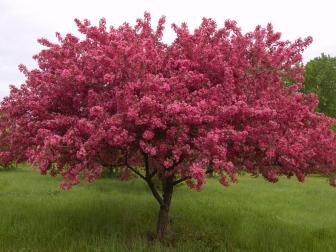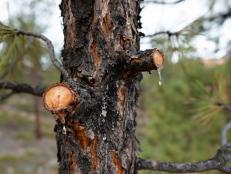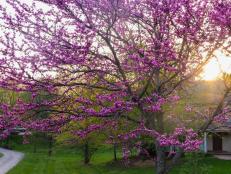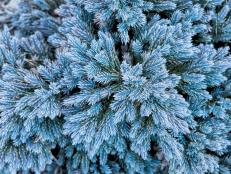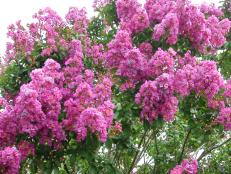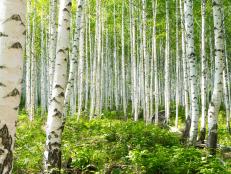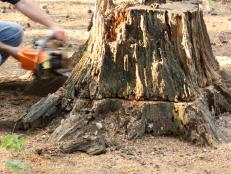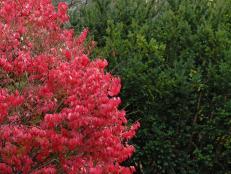Cottonwood Tree Facts
Learn about growing cottonwood trees, known for their ample shade and cotton-like seeds.
A towering native, a cottonwood tree soars and spreads, growing more than 100 feet tall and almost as wide. It’s a cherished shade tree, often planted in parks. In the wild, cottonwood grows along rivers, ponds and other bodies of water. It also thrives in floodplains and dry riverbeds, where infrequent rains transform dry land into waterways.
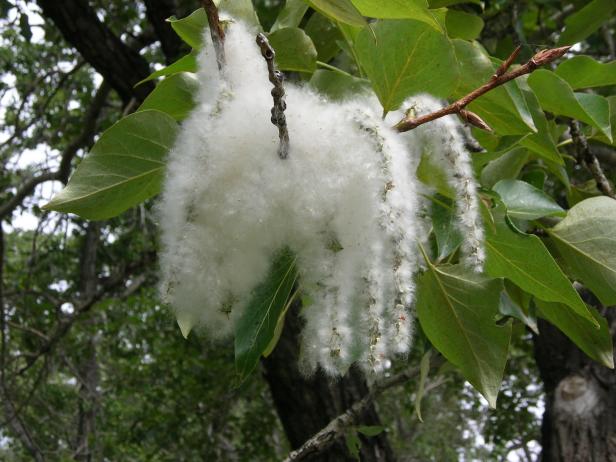
Shutterstock/Doug Matthews
Historically, cottonwood earned its place as a landscape tree because it grows rapidly, adding up to 6 feet a year. It's also a favorite for shade, with the large spread helping to cast cooling shade over homes and streets. There’s a cottonwood for nearly any region, with different hardy types in Zones 2 through 9.
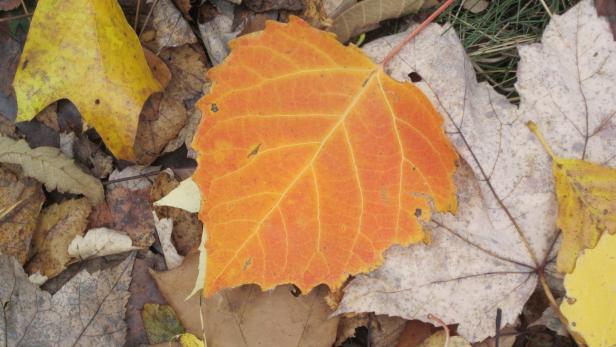
Julie Martens Forney
The Pros of Cottonwood
Fast growth and wonderful shade are reasons enough to cherish cottonwood, but these trees possess other qualities that make them worth planting. The leaves have flat stems, so they shimmer and rustle in the wind. The effect is eye-catching and distinctively attractive. The tree offers strong fall color, with leaves fading to glowing shades of gold.
In the wild, cottonwood is one of the fastest trees to colonize unplanted areas, making it a solid choice for areas prone to flooding and soil erosion. The National Forest Service uses it to stabilize streambanks and act as a natural waterway filtration system to reduce sedimentation. It tends to colonize and form groves that act as natural windbreaks. In areas with enough space, such as a ranch or acreage, a cottonwood makes a beautiful addition to a landscape.
The Cons of Cottonwood
Of course, not everything about the cottonwood tree is perfect. For instance, the cotton that helps carry seeds on the breeze can be a nuisance, especially when it sticks to window screens, blocks air conditioning units or coats a swimming pool. There's a workaround, though. Cottonwood trees are male and female, and only the female types form seeds (and cotton). Look for the male 'Siouxland' variety, which grows 2 feet to 3 feet per year, and you’ll have a cottonwood tree minus the cotton.
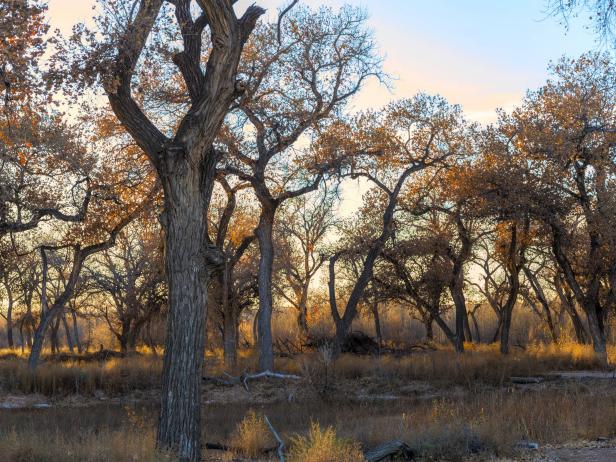
Maryann Glen for U.S. Fish and Wildlife Service at FWS.gov
The rapid growth that makes some folks cheer for cottonwood is also a negative because the wood is brittle, leading to breaking branches and plenty of twigs to collect before mowing. As a cottonwood tree grows, large branches often break in windstorms, which can lead to property damage.
15 Fast-Growing Trees 15 Photos
Liven up your yard and add shade quickly with these fast-growing trees that avoid the pitfalls of weak wood short lifespan.
Because cottonwood trees are adapted to thrive in floodplains, they naturally have shallow root systems, so that as floodwaters recede, the roots can breathe and the tree survives. These same shallow roots wreak havoc with sidewalks and driveways. Roots also seek out moisture, invading sewer pipes and septic systems.
The Bottom Line on Cottonwood
Cottonwood makes a stunning tree — planted in the right spot. It's a spectacular sight when it can grow unrestricted and welcome wildlife like roosting turkeys or eagles. A good place to grow cottonwood is away from structures, on a ranch, farm or in a park.
In a residential setting, it’s not the best choice. In fact, some municipalities ban the planting of cottonwood and many gardening experts recommend removing cottonwood trees on residential properties. If you buy a home with a cottonwood tree, it's wise to have it inspected by a certified arborist who can assess the tree's health and prune — or remove — as needed.
Cottonwood Tree Facts
- Native Americans used cottonwood trees for dugout canoes and even transformed its bark into a medicinal tea.
- Cottonwood trees feature male and female parts on separate trees (female trees are the ones that produce the cottony substance that gives the tree its name).
- Cottonwood trees can add 6 feet in height each year making them the fastest growing trees in North America.
Cottonwood Varieties
Eastern cottonwood (Populus deltoides) — grows in eastern U.S. and southern Canada
Black cottonwood (Populus balsamifera) — grows west of the Rocky Mountains
Fremont cottonwood (Populus fremontii) — grows from California east to Utah and Arizona and south into northwest Mexico
Common Questions about Cottonwood Trees
What are cottonwood trees?
Cottonwood trees are native plants that grow huge — over 100 feet tall and wide. They're famous (or maybe infamous) for producing seeds attached to a cottony mass that floats on the breeze, coats window screens and clogs pool and AC filters. Some people say the cotton-laden seeds make them sneeze.
What does a cottonwood tree look like?
A cottonwood tree is wide and spreading, with branches that are strongly sculptural. The branch structure adds architectural interest to winter scenes. Leaves have flat stems, which makes them shimmer and rustle in the breeze. The effect is magical, adding a visual and audible element to the landscape.
Where do cottonwood trees grow?
Cottonwood trees crave moisture and are naturally found growing along streams, rivers and floodplains. In a residential setting, you’ll typically see them in parks, especially ones located near rivers.
How fast does a cottonwood tree grow?
Cottonwood trees are one of the fastest growing trees, adding up to 6 feet a year. They’re actually the fastest growing native tree in North America.
Are cottonwood trees and poplar trees the same?
Botanically speaking, a cottonwood tree is a type of poplar tree. Cottonwood belongs to the botanical genus of Populus, which translates to a common name of poplar.
Is planting cottonwood trees difficult?
Planting a cottonwood tree is no more difficult than planting any other tree. Cottonwoods do have a shallow root system, so it's a good idea to keep trees staked after planting to help stabilize the tree while it's developing a solid root system to anchor it to the earth.







